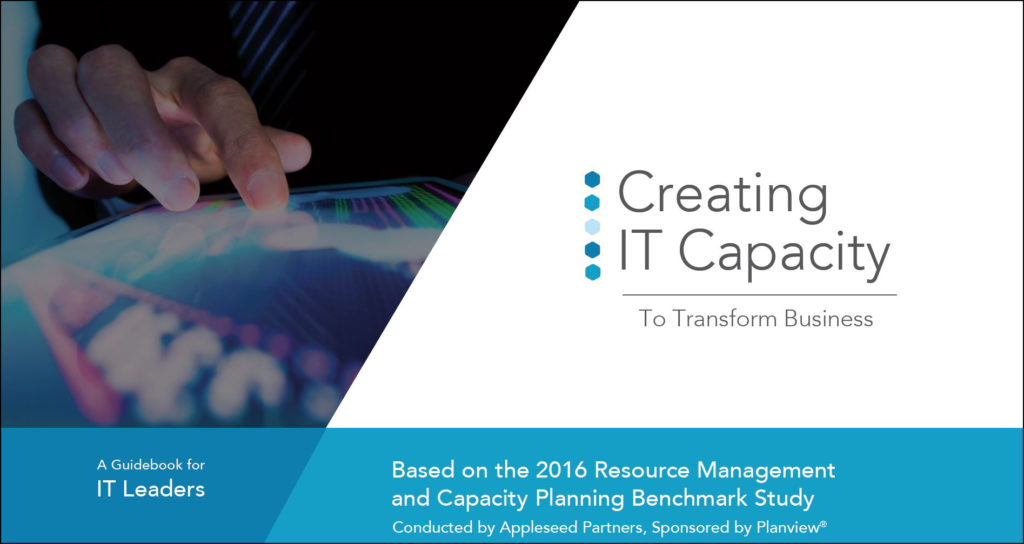
A compelling statistic emerged from the 2016 Resource Management and Capacity Planning benchmark study. Of organizations that considered themselves lower maturity when it comes to capacity planning, only 31% typically even consider capacity when deciding to take on new projects. In stark contrast, 72% of mature companies consider capacity most or all of the time.
Aber welche Vorteile hat die letztgenannte Gruppe von der Möglichkeit, bei der Überprüfung der eingehenden Nachfrage die Kapazität zu beurteilen? Wie sich herausstellt, kann das Verständnis der Ressourcenkapazität viele positive Ergebnisse liefern. Ich habe 5 wichtige Vorteile hervorgehoben, die von Organisationen berichtet wurden, die ein angemessenes Verständnis der Ressourcenkapazität in ihren Projektaufnahmeprozess integriert haben.
(For a better understanding of what capacity planning actually involves, see my earlier post, What is Resource Management and Capacity Planning and Why Should You Care?)
- Größere geschäftliche Flexibilität - Wenn sich die Prioritäten plötzlich verschieben müssen, um einen neu entstehenden Bedarf zu decken, ermöglicht das Wissen um die erforderlichen Schlüsselrollen und Ihre Kapazität, diese zu besetzen, fundiertere Entscheidungen über Kompromisse und Zeitplanung. Schließlich ist es schwer, Ressourcen zu verlagern, wenn Sie nicht genau wissen, wer zur Verfügung steht, wie groß die Kapazität ist, neue Aufgaben zu übernehmen, oder woran die Mitarbeiter gerade arbeiten, die vielleicht verschoben werden könnten.
- A Proactive Staffing Strategy – Understanding your organization’s capacity at a role level, as compared with the needs of the demand pipeline, allows you to proactively set a staffing strategy that may include adding skills, hiring contractors, offshoring certain activities, bringing in interns, hiring more staff, or any number of actions that can assure effective execution of organizational strategies.
- Fewer Firefights and Less Burnout – When your people’s capacity to take on new work is considered and work is scheduled accordingly, the obvious result is fewer firefights, less overload, and more productive, satisfied resources. While change is inevitable, work can be more planful—even emergent work. It’s a simple fact that continued, excessive overtime reduces productivity and increases stress and turnover. To this end, a little bit of planning can go a long way.
- More Reliable Project Schedules – In today’s dynamic and agile world, project schedules must be fluid and adaptable. But that doesn’t excuse one from planning. On the contrary, planning is necessary even for Agile work, and that includes planning and replanning based on available capacity. This will ensure that the current project schedule is fully capacitized and thus more reliable. In contrast, planning to infinite capacity is like spinning the roulette wheel—if you hit your mark, it’ll be mostly by accident.
- The Ability to Innovate – Being able to quickly evaluate capacity to take on new innovation projects is crucial. According to the 2016 Resource Management and Capacity Planning Benchmark Study, 71% of IT leaders at higher maturity organizations are able to respond to innovation opportunities in hours or days instead of weeks or months. One participant who successfully undertook capacity planning, a senior manager with a leading consumer products company, reported going from eight weeks to only two or three days on average to evaluate capacity to take on new projects. Indeed, innovation at speed is a clear business advantage. Likewise, the ability to assess capacity to plan for innovation projects in the portfolio is just as vital.
Es sollte inzwischen klar sein, dass diese fünf Hauptvorteile zusammengenommen zu einer besseren Kundenerfahrung, einem positiveren Arbeitsumfeld und einer besseren Fähigkeit zur Umsetzung von Strategien führen. Es ist keineswegs abwegig, hinzuzufügen, dass die Einsicht in die Kapazitäten in der Tat ein Schlüsselfaktor für Agilität und Innovation ist - ein echtes Unterscheidungsmerkmal in der heutigen Welt.
If understanding resource capacity is something that is important to your organization, check out the steps to get there, download the guidebook, “Creating IT Capacity to Transform Business.”





